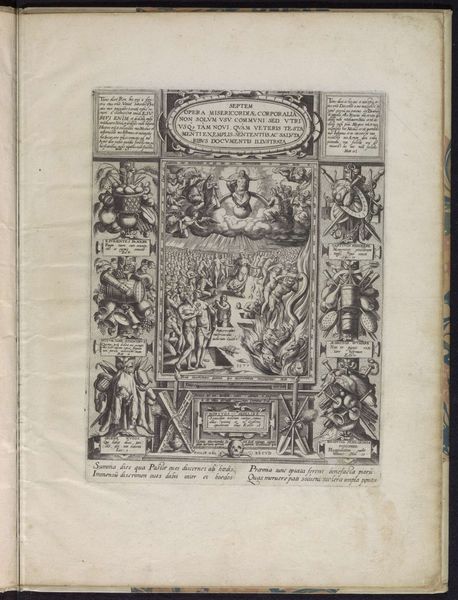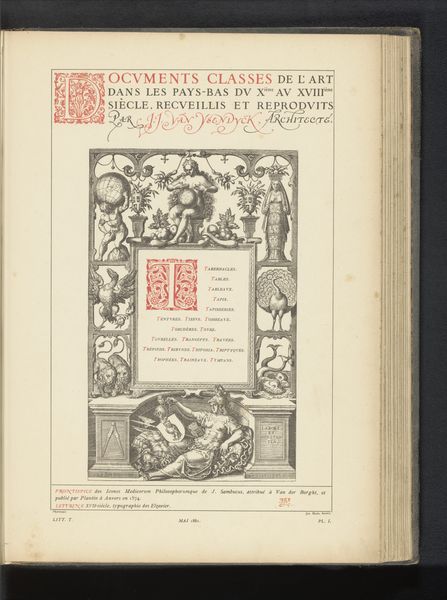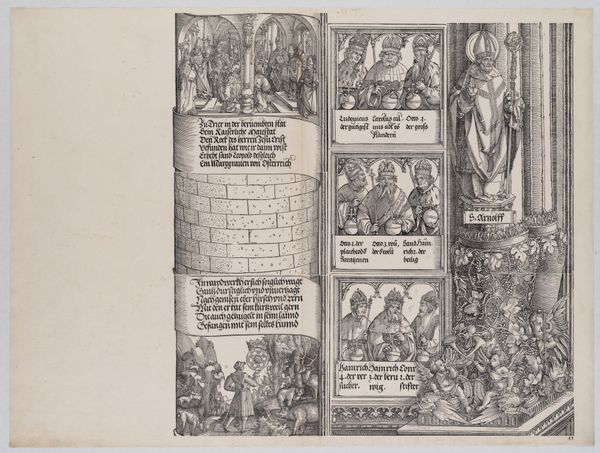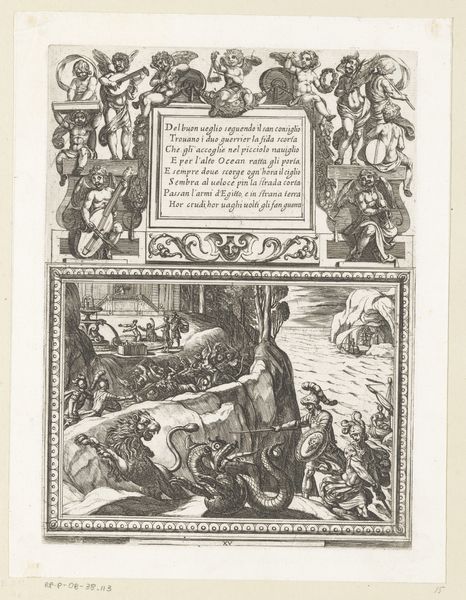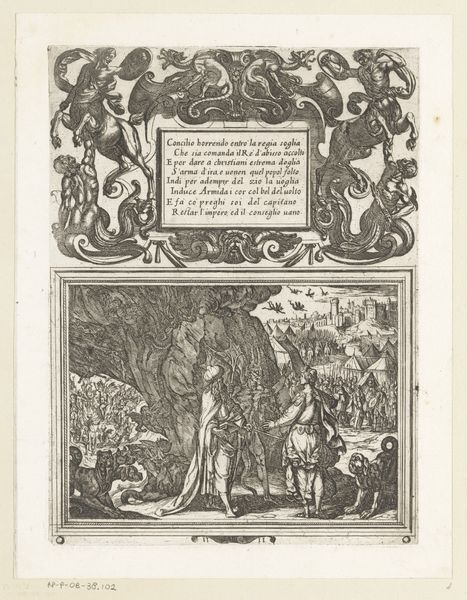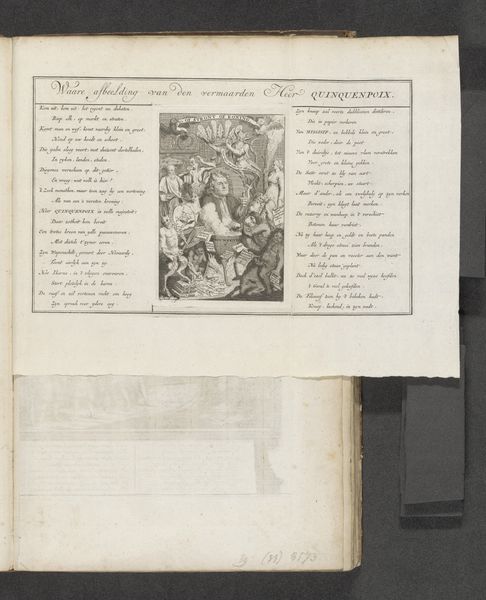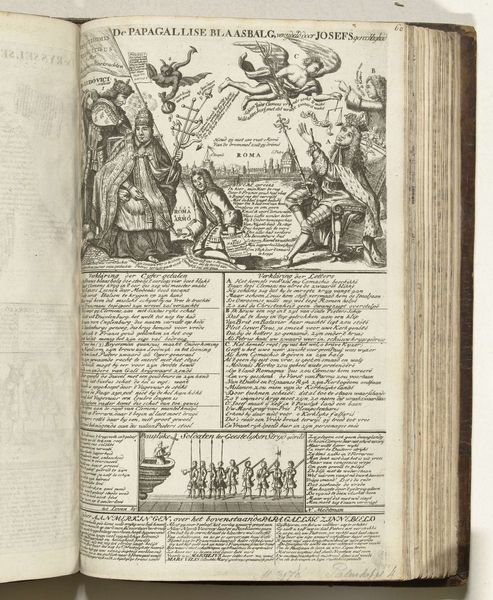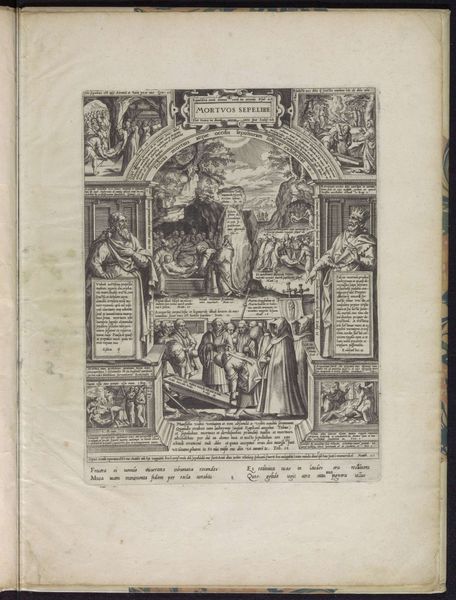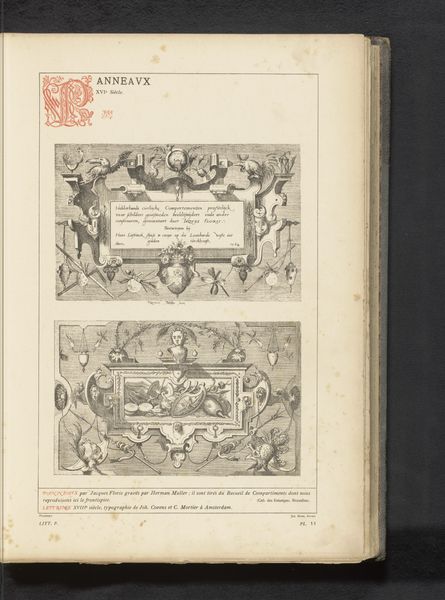
print, etching, engraving
#
allegory
#
baroque
#
ink paper printed
# print
#
etching
#
old engraving style
#
history-painting
#
engraving
Dimensions: height 292 mm, width 185 mm, height 290 mm, width 187 mm
Copyright: Rijks Museum: Open Domain
Editor: This is "Allegorie op het Rooms-Duitse keizerschap" made around 1745 by Elias Baeck, it's an engraving. I find its rigid and dramatic Baroque style compelling. How would you describe what strikes you most about the work? Curator: The composition is a fascinating example of Baroque visual rhetoric. Note the stark contrast between the chaotic, writhing figures in the foreground and the static, idealized representation of power above. Baeck is manipulating line and form to create a clear hierarchy, wouldn’t you agree? Editor: Absolutely. It feels very intentional. What does that hierarchy communicate? Curator: The allegorical figures – their placement, gestures, and attributes - serve to legitimize the Emperor's rule. Notice the meticulous detail in the etching, how it directs your eye through the layers of meaning. The artist strategically positions the figures so that the Emperor is highlighted, correct? What impact does the rigid structure on the one half create for the audience? Editor: The Emperor almost appears distant and unconcerned, separated from the reality below. The detailed etching on the textual part creates visual stability in opposition to the dramatic visual representation. Curator: Precisely. It’s this deliberate structuring, this play of contrasts between chaos and order, darkness and light that conveys a message of absolute power and divinely sanctioned authority. A clear communication strategy implemented to present and immortalize power! Editor: That makes perfect sense. I appreciate your emphasis on the compositional elements; it's shown me how the structure itself is part of the message. Curator: And how our focused attention reveals an impressive execution strategy within the graphic arts.
Comments
No comments
Be the first to comment and join the conversation on the ultimate creative platform.
